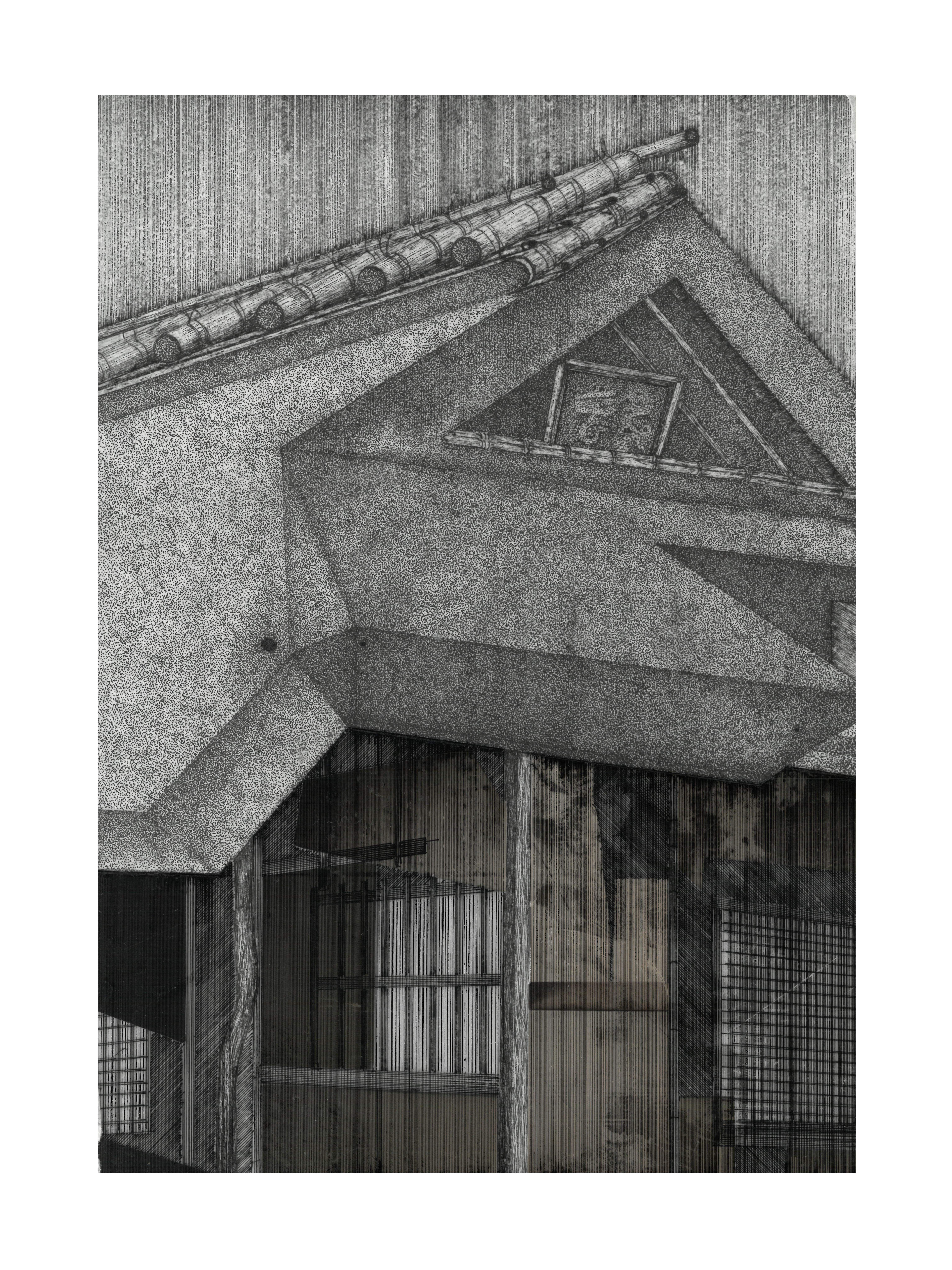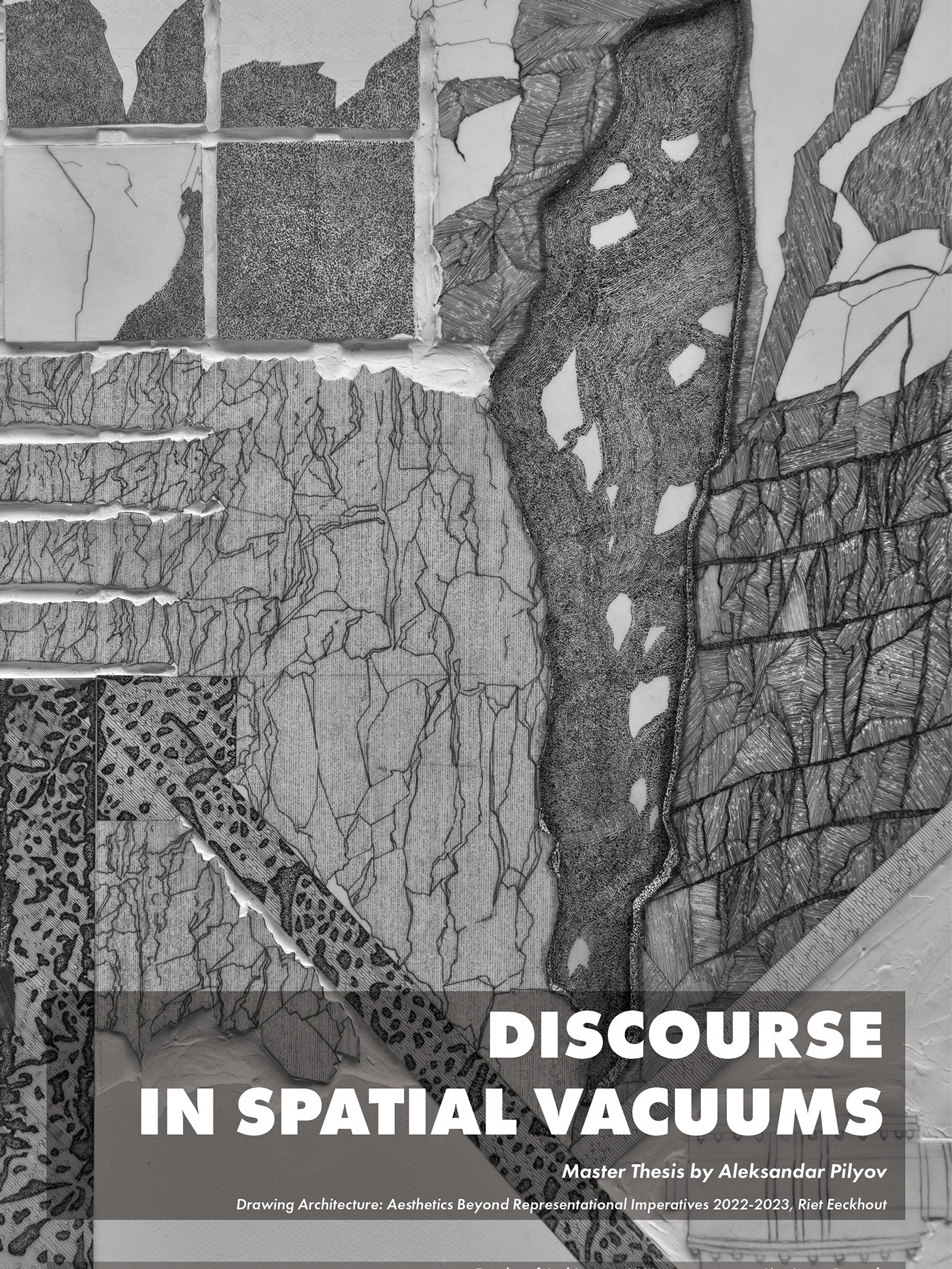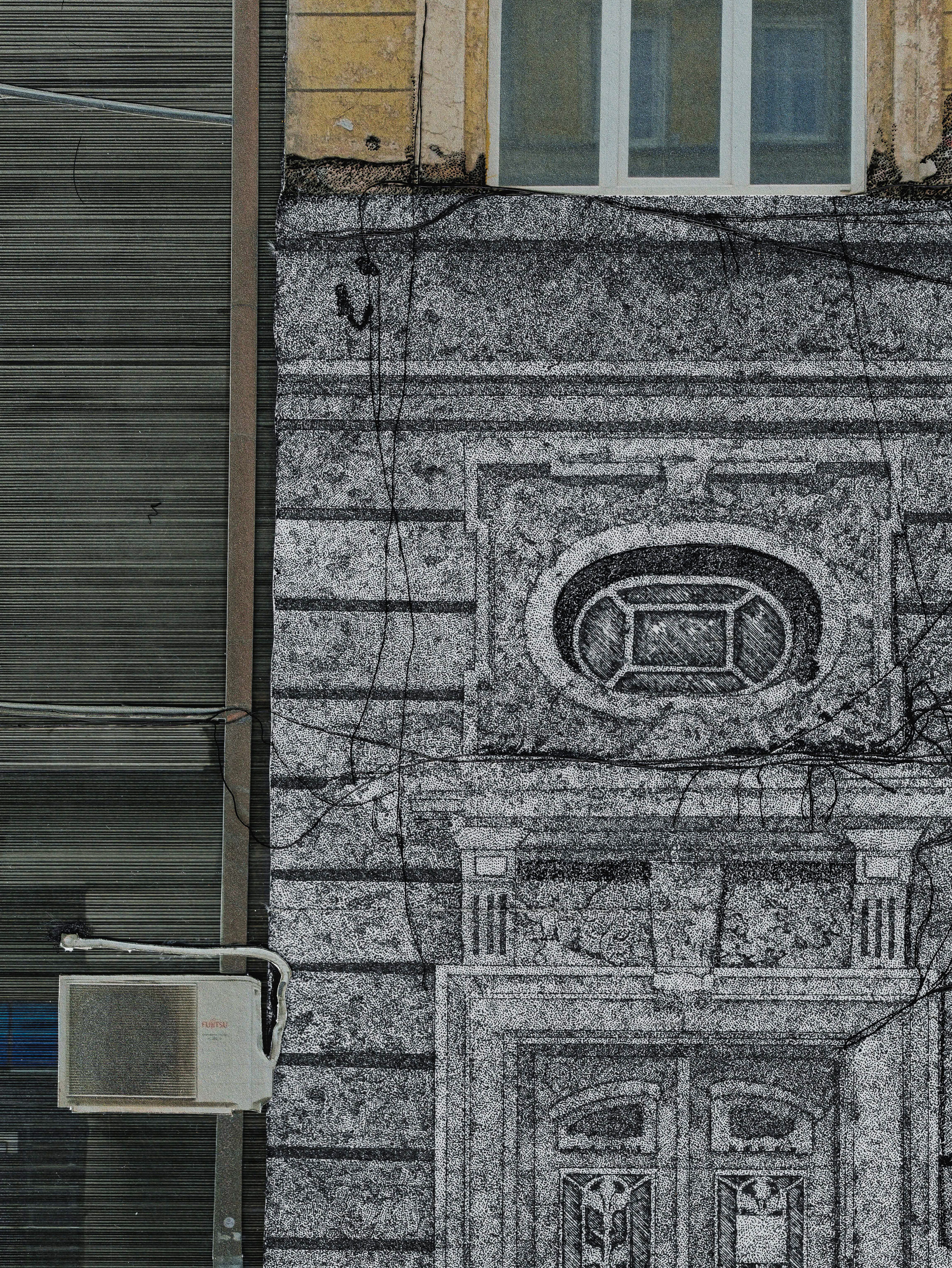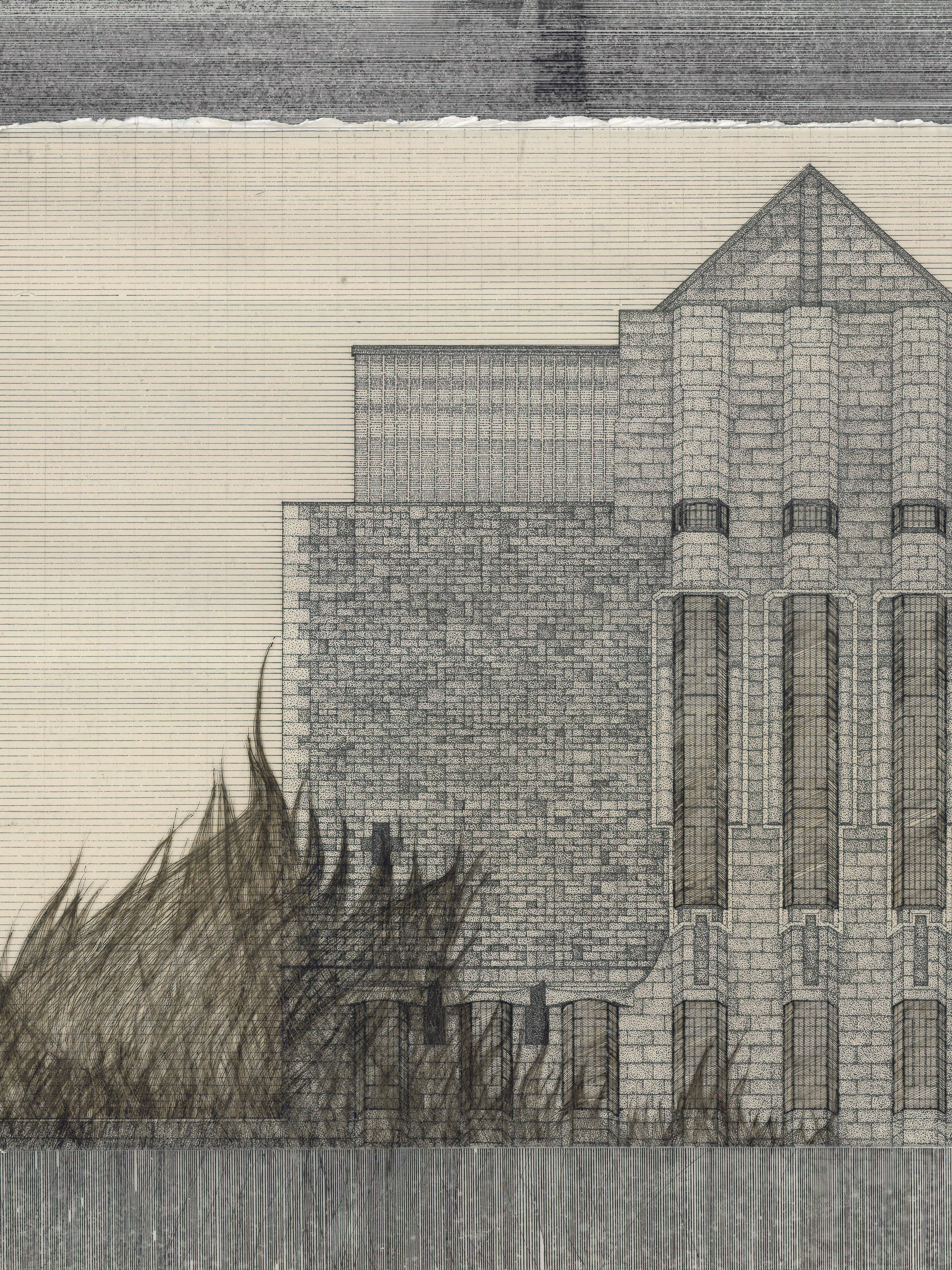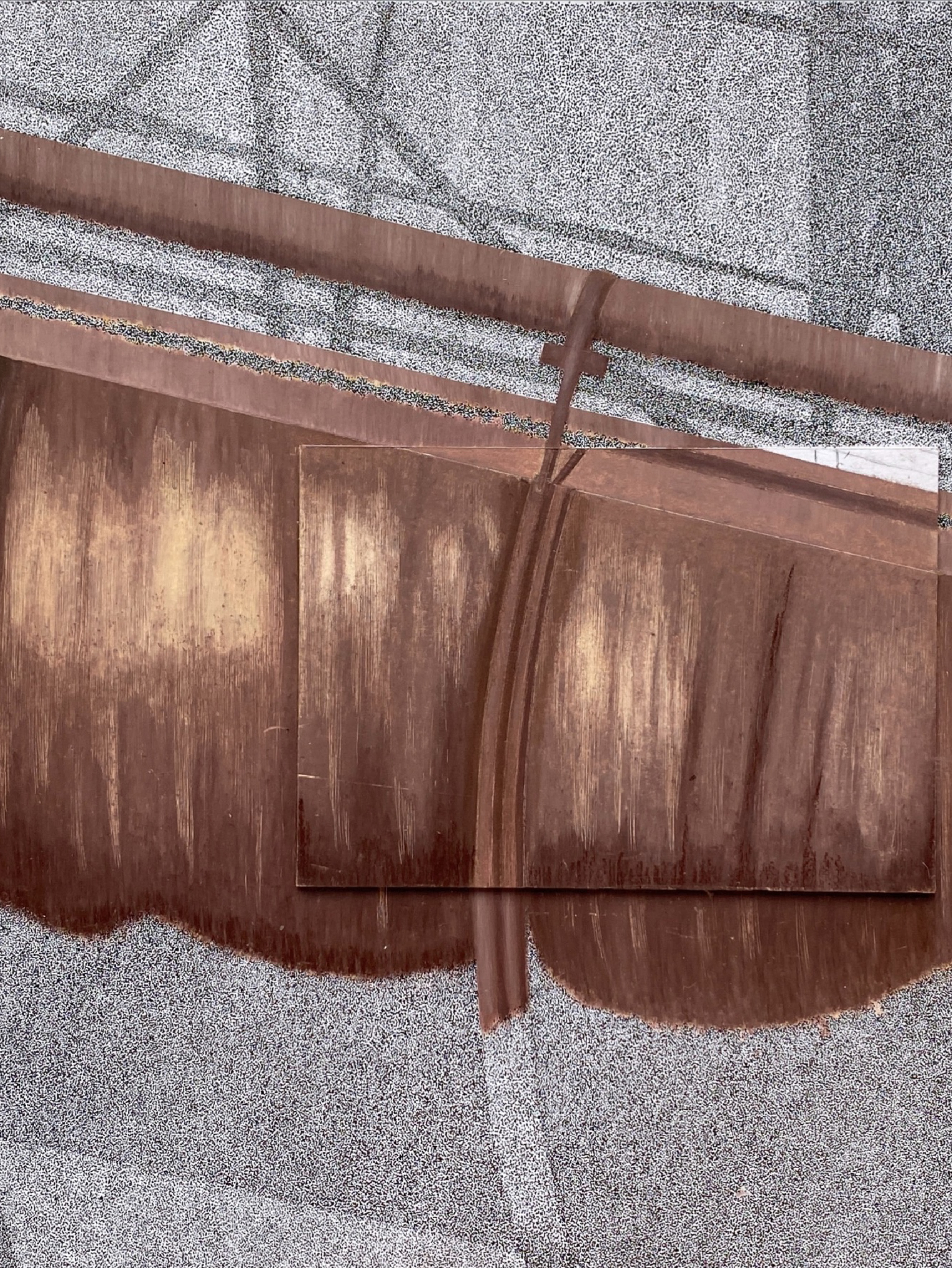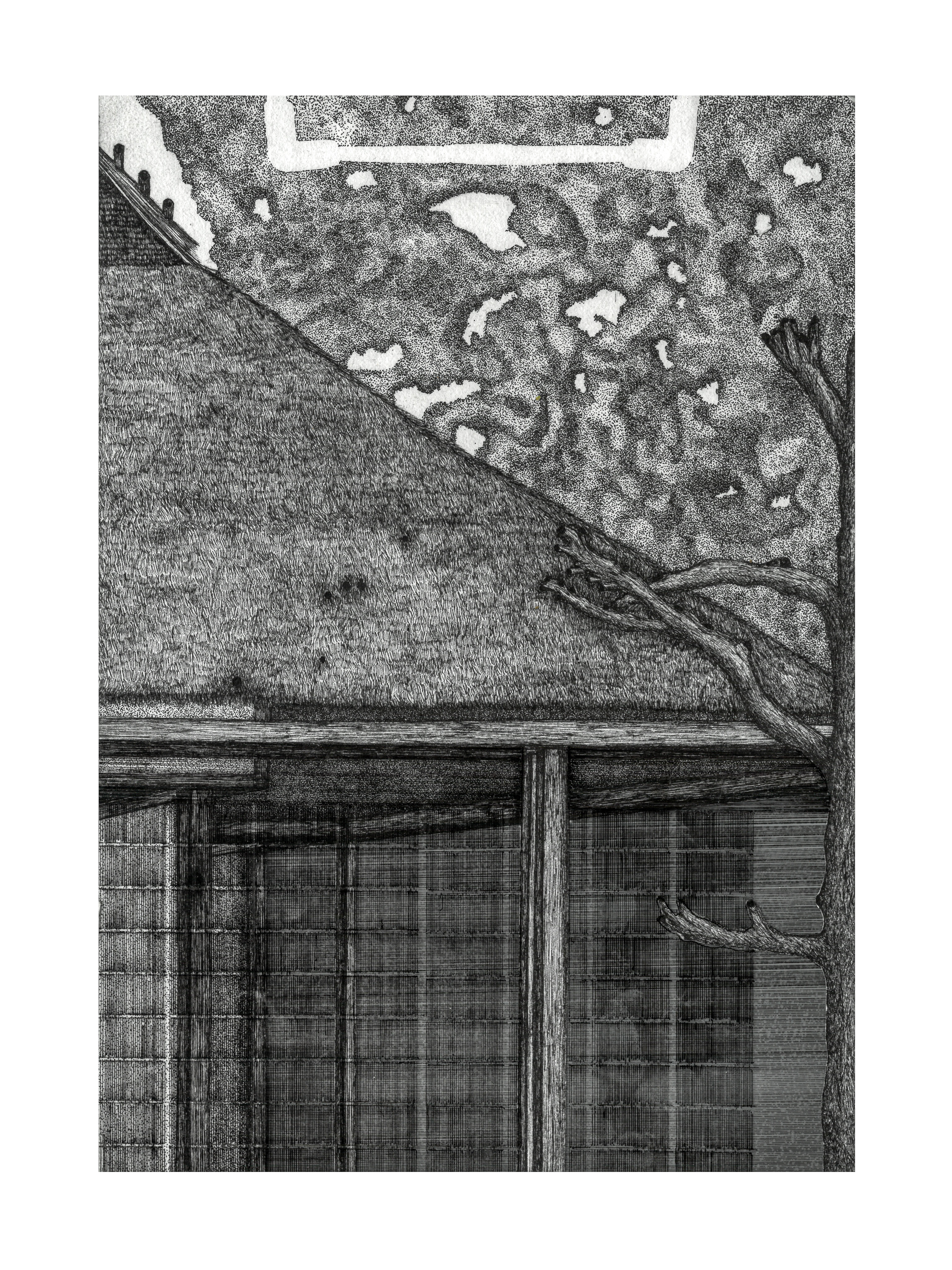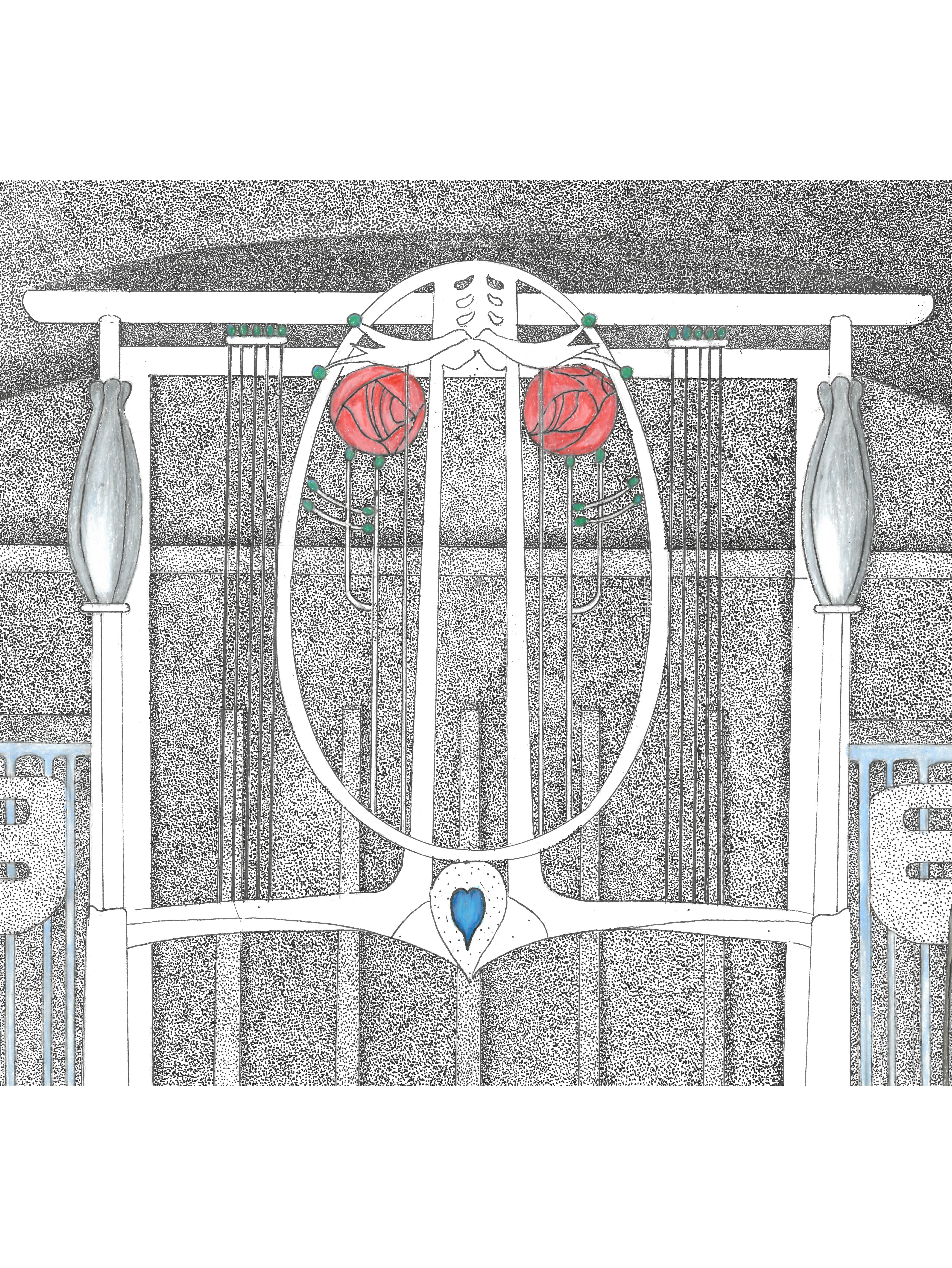The sodekabe wall is an interior feature of a traditional Japanese teahouse, prominently presenting the arrangement of utensils beneath it. Many of these details were crafted with cultural sensitivity, reflecting the way people lived. In this context, the materials are intentionally chosen and open to interpretation and analysis. How has the material aged, and how does it function within an open, canvas-like space? Positioned almost at the center of the room, the wall serves as a demonstrative element—both concealing something behind it and revealing aspects of its structure. The wear and tear are carefully observed, with the shapes in the drawing derived closely from photographs. Ultimately, this is a focused study of a symbolic interior element with a fascination of the Japanese Teahouse design.
"I found it fascinating to explore the decaying and worn elements of houses that have outlived their time but are preserved or refurbished for their historical and educational value. It felt as though there was much more to be learned from aging architecture in its raw and natural state. As I flipped through the photographic pages, one particular interior element kept catching my eye—I felt compelled to examine it more closely than usual. By the end of the drawing process, I was continuously adding and removing dots on PVC layers, trying to pinpoint the element’s exact sense of age. This work became a study in isolating architectural elements from their original context and allowing them to exist independently on paper—open to interpretation on their own terms."
This work is made with ink on Washi paper, PVC, and polyester paper.
Dimensions: 297 x 210mm



